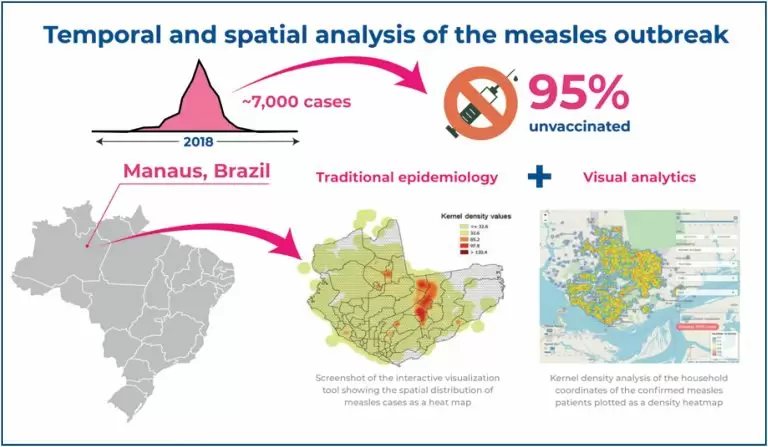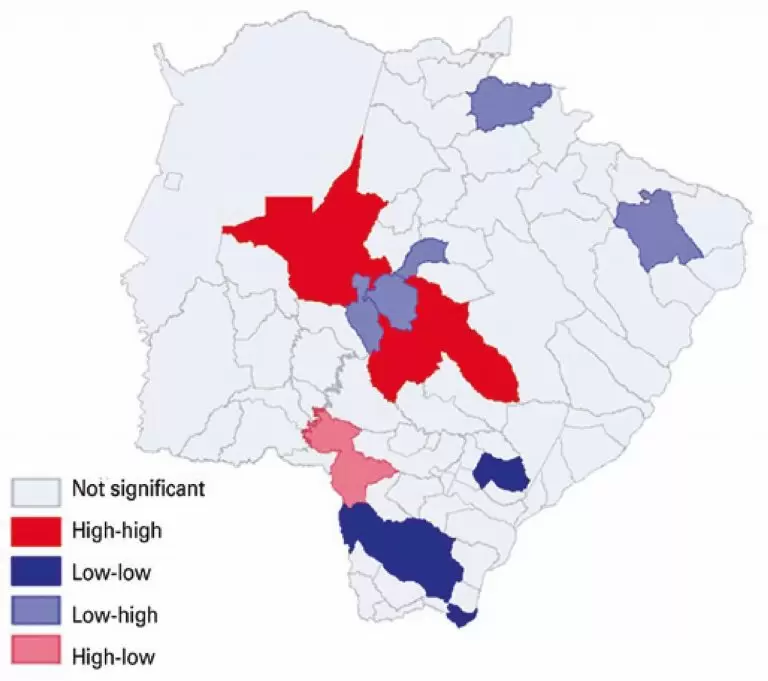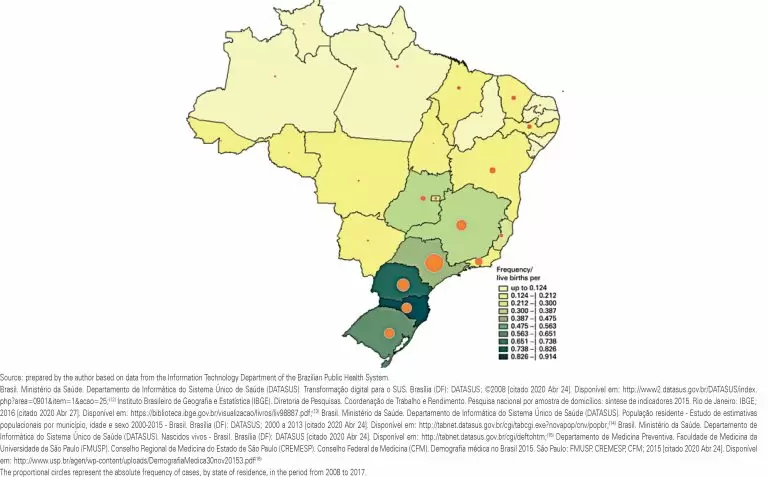25/Nov/2025
Smartphone-based retrospective analysis for malaria hotspot detection
DOI: 10.31744/einstein_journal/2025AO1826
Highlights ■ Patients gave informed consent to share GPS history from their smartphones. ■ Anonymized GPS data revealed stay points and malaria infection hotspots in Manaus. ■ Hotspots guided health agents to mosquito breeding sites, aiding malaria control. ABSTRACT Objective: To leverage passively collected retrospective smartphone location data to accurately identify malaria transmission hotspots through the development of a novel tool, the Sickness Positioning System. Methods: We collected anonymized location history data from over 200 malaria-infected individuals using Google Takeout. […]
Keywords: GPS; Malaria; SiPoS; Smartphones; Spatial Analysis
19/Mar/2024
Temporal and spatial analysis of over 7,000 measles cases outbreak from 2018 to 2019 in the Brazilian Amazon
DOI: 10.31744/einstein_journal/2024AO0931
Highlights Approximately 95% of the measles cases reported occurred in unvaccinated individuals. O ur findings revealed that socioeconomic factors influence the spread of the disease. Visual analytics enhanced epidemiological analysis. ABSTRACT Objective: This study aimed to present a temporal and spatial analysis of the 2018 measles outbreak in Brazil, particularly in the metropolitan city of Manaus in the Amazon region, and further introduce a new tool for spatial analysis. Methods: We analyzed the geographical data of the residences of over […]
Keywords: Age distribution; Disease outbreaks; Geographic information systems; Measles; Prevalence; Spatial Analysis; Vaccination
06/May/2022
Incidence of hemoglobinopathies and spatialization of newborns with sickle cell trait in Mato Grosso do Sul, Brazil
einstein (São Paulo). 06/May/2022;20:eAO6535.
View Article06/May/2022
Incidence of hemoglobinopathies and spatialization of newborns with sickle cell trait in Mato Grosso do Sul, Brazil
DOI: 10.31744/einstein_journal/2022AO6535
ABSTRACT Objective To evaluate the incidence of variant hemoglobins of newborn samples from the Neonatal Screening Center in the state of Mato Grosso do Sul, Brazil, and to analyze the distribution and spatial autocorrelation of newborns with sickle cell trait. Methods Samples from 35,858 newborns screened by the Neonatal Screening Center. The samples with inconclusive diagnosis were submitted to electrophoretic, chromatographic, cytological and molecular analyses. The spatial distribution analysis of newborns with sickle cell trait was performed by spatial autocorrelation. […]
Keywords: Infant, Newborn; Neonatal screening; Residence characteristics; Sickle cell trait; Spatial Analysis
25/Nov/2021
Epidemiology and costs of surgical treatment of developmental dysplasia of hip in the Brazilian Public Health System in a decade
einstein (São Paulo). 25/Nov/2021;19:eGS5625.
View Article25/Nov/2021
Epidemiology and costs of surgical treatment of developmental dysplasia of hip in the Brazilian Public Health System in a decade
DOI: 10.31744/einstein_journal/2021GS5625
ABSTRACT Objective: To describe and analyze the epidemiology and costs of surgical treatment of hip dysplasia in the Brazilian Public Health System. Methods: An ecological analytical study that evaluated a time series and the geographic distribution of surgical treatment of hip dysplasia in Brazil. Frequencies of cases, number of cases and associated factors were analyzed. Correlations, frequency maps and flow maps are presented and discussed. Results: During the study, 14,584 patients with dysplasia were admitted to hospitals according to Information […]
Keywords: Brazil; Costs and cost analysis; Developmental dysplasia of the hip; Prevalence; Spatial Analysis; Time Series Studies; Unified Health System






